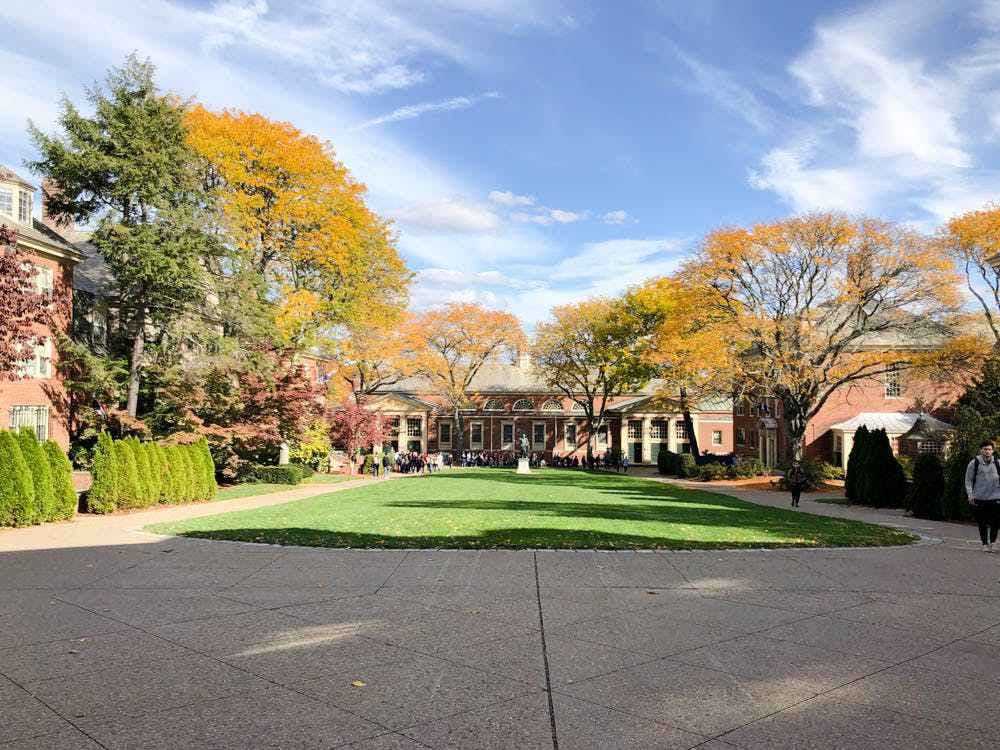The residential experience is a central part of life for undergraduates who are required to live on campus for six semesters due to the University’s belief that the “residential experience is integral to undergraduate students’ academic, social, intellectual and personal growth,” according to Residential Life’s website.
But despite the requirement for students to live on campus, not all University dorms are fully accessible to students with disabilities. For example, according to the campus accessibility map, multiple residential buildings adjacent to the Ruth J. Simmons Quadrangle — which house sophomores and juniors — contain barriers that “would prevent a wheelchair user from entering the facility.”
Being unable to enter or fully use all the services within a building can disrupt one’s ability to fully engage in campus life, said Silver McKie ’22 Disability Justice at Brown executive board member.
“We have dorms that are accessible so disabled students can live there, but it’s not only about living — that’s the bare minimum,” McKie said. “If we want to visit our friends in their dorms, if we want to go to parties at dorms, if we want to do anything that interacts with (a) dorm that’s not ours, disabled people can’t do that when it is an inaccessible space.”
Beyond making sure that accessibility features are part of a building, the University should also be “making sure that they’re integrated and not separated,” McKie said. Integrated accessibility would be “having the front door of a building be wheelchair accessible instead of having a side back door … so if a group of people are trying (to enter) a building together, the disabled person can enter with the group instead of having to leave and rejoin.”
This type of integrated design follows the principles of Universal Design, which aims to meet “the needs of everybody in the space so that all bodies can enjoy that space for all that it is,” said Sarah Skeels, senior teaching associate in behavioral and social sciences.
The Health and Wellness Dorm, which began housing students this summer, is an example of a building that was built with a universally accessible entrance, Skeels said.
While this new building was being built, the University had a “panel of disabled students who sat and talked with the architects,” McKie said.
Integrating this type of accessibility into new buildings is legally mandated under the Americans with Disabilities Act of 1990, Skeels noted.
The new dorms under construction on Brook Street “will be fully accessible to individuals with disabilities and constructed in full compliance with current ADA accessibility guidelines including accessible entrances, elevators, kitchens, bedrooms, bathrooms and landscape,” Vice President for Facilities Management Michael Guglielmo Jr. wrote in an email to The Herald.
“Beyond just this residence hall project, all newly constructed buildings on Brown’s campus are planned and managed in full accordance with American with Disabilities Act standards,” Guglielmo added.
But when it comes to buildings constructed prior to the ADA’s implementation, the University has historically taken two approaches to accessibility: complete renovation or retrofitting, the process of adding components to older buildings.
Friedman Hall, for example, was renovated in 2017 to be fully accessible to students with disabilities.
Retrofitting tends to be more “of an afterthought,” Skeels said. Unlike renovating, retrofitting a building might mean “they try to stick a ramp in there so somebody can get in,” she said. For “most of the buildings at Brown, that’s the way it’s been because they’ve been there for a long time” and were built “when there wasn’t a civil rights law.”
Under the ADA requirements, new buildings have to be accessible. But regulations related to existing buildings are less explicit: according to the ADA website, “when a business alters an existing facility in a way that affects usability, the areas or elements being altered must comply with the ADA Standards.”
According to Facilities Management, accessibility is a key concern when renovating older buildings.
“Wherever feasible, renovations of older facilities on the Brown campus include accessibility improvements,” Guglielmo wrote. Some current and planned renovations that incorporate accessibility improvements include those on the Lincoln Field building and Churchill House.
“Facilities Management is currently partnering with Residential Life in a planning process to identify highest needs for renovation over the next three years,” Guglielmo wrote.
Renovations on older buildings often have to grapple with incorporating accessibility when those buildings were built without it in mind, Skeels said. Still, she added, “they did it with Friedman, so you can do it with (older) buildings. It’s just expensive.”
Skeels noted that when the University fails to make its buildings accessible, it sends a message to the student community. “It’s more about the understanding of why things should be accessible and … who Brown wants coming to this University — because right now, it is not physically disabled people.”
According to University administrators, campus accessibility is key to future planning for construction but also represents significant costs.
“On a campus with many hundreds of buildings, including many that date to the 1700s, creating a more fully accessible campus requires a long-term commitment and significant investments in capital projects,” University Spokesperson Brian Clark wrote in an email to The Herald. “We will continue to focus on the accessibility of spaces in support of inclusion for all individuals with disabilities on campus.”
Skeels, who uses a wheelchair, said that the University has become much more accessible in the past 20 years. But entering and engaging with all the buildings, including those that have been retrofitted, is still a challenge.
For example, Alumnae Hall has an elevator “that comes up from the ground, but you have to have a key to get it to work, so I can’t just go into that building if I wanted to,” she said.
True accessibility, Skeels added, is about “really thinking about” and asking, “Can everybody share in this environment equitably?”





